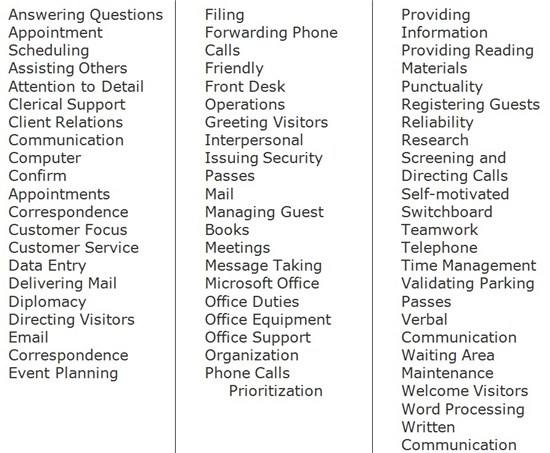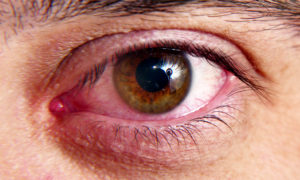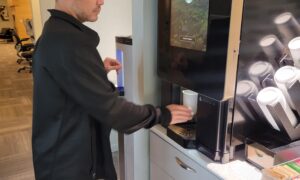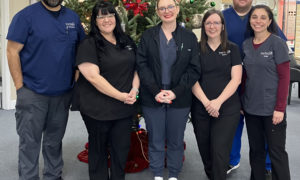 Your receptionist is a key player in your office, findings from Jobson Optical Research’s 2013 The Waiting Game report suggest. When asked what is important in a waiting room, a majority of respondents (62.6 percent) said that a friendly receptionist is very important, followed by comfort factors. Close to half (46.3 percent) said a comfortable place to sit was very important and 45.7 percent said temperature was very important. Entertainment factors did not rank nearly as high, but within entertainment, reading materials ranked the highest.
Your receptionist is a key player in your office, findings from Jobson Optical Research’s 2013 The Waiting Game report suggest. When asked what is important in a waiting room, a majority of respondents (62.6 percent) said that a friendly receptionist is very important, followed by comfort factors. Close to half (46.3 percent) said a comfortable place to sit was very important and 45.7 percent said temperature was very important. Entertainment factors did not rank nearly as high, but within entertainment, reading materials ranked the highest.
Click HERE to purchase Jobson Optical Research’s 2013 The Waiting Game report.
Is your receptionist gaining you patients or losing you patients? The person who the patient first touches in your practice is often the receptionist. The results of all of the practice marketing efforts often leads the potential new patient directly to your receptionist. If this person is skilled, then the patient schedules an office visit. If they are not skilled, then the patient moves on to the next practice, and our marketing dollars didn’t just circle the drain, they went down the drain.
The number one reason patients leave practices is because of staff. If the receptionist is skilled, patients develop a relationship with the receptionist that helps them to return to the practice. This relationship can be so powerful that it helps patients overlook problems and still return to the practice for care. When the receptionist lacks skills, established patients may leave the practice to seek care elsewhere.
Because the receptionist is so important to a successful practice, here is your action plan for this week. Go through the following three steps to make sure your receptionist is proficient in the skills necessary to master this position.
STEP 1: Identify the skills necessary to master the job of an excellent receptionist.
The chart below gives the About.com list for receptionist skills.

Start with this chart and customize it for your office. Can you eliminate any of the 54 skills listed in the chart above? Hint: Issuing Security Passes may not be necessary in your office so it can be eliminated. Are there any skills not listed in the chart that may be necessary in your office? Hint: Cross-training could be added.
STEP 2: Define the end product of each skill and how to measure if it is achieved.
What is the end product of Appointment Scheduling? Is it just an appointment scheduled correctly or does it also include asking if other family members can also be scheduled? Does it include identifying how the patient is going to pay for the exam and gathering the correct information so the patient can be pre-certified for coverage before the scheduled examination date when the patient has third-party coverage?
Thinking through each of the skills and the necessary end products is essential to making sure your receptionist is actually achieving the end products you want from each person touching your practice. Recently we had the privilege of attending a presentation from Ritz-Carleton. They described that they hire a lot of people to clean rooms who came from previous employment from other hotel chains. During the Ritz-Carleton training, new employees are told, “We know that you have been previously trained on how to clean a hotel room, but you have not been trained to clean a hotel room the Ritz-Carleton way. That’s what you are going to learn today.”
Use this step to clarify your “Ritz-Carleton way” for each of the receptionist skills.
STEP 3: Train and proficiency-test your receptionists.
TELL – SHOW – TRY is a good outline to follow in training. If you want to think of this another way that reflects the way we learn, it is HEARING – SEEING – DOING -TELL (HEARING)
a) Create the ideal training program by utilizing training resources such as online courses, vendor resources, books, in-house-created training programs, staff and doctors.
b) Create a schedule. Decide if you are going to do on-the-job training or dedicated training. We prefer dedicated training to get the new hire up to speed as quickly as possible.
c) Educate the trainee on how to do each skill with the end product always in view.
SHOW (SEEING)
It is always helpful to let the trainee see what the end product looks like by observing someone working who currently does the job well.
TRY (DOING)
Once the new hire has passed all proficiency testing, then let them try with patients, but with support nearby. Keep this up until the trainee is ready to be on their own. Remember that people have different learning curves, so some people will be ready to go solo sooner than others.
Don’t forget to proficiency-test the trainee on each skill while going through training and then randomly going forward over their career. Always remember the axiom: People don’t always do what you expect, but they will do what you inspect.



























